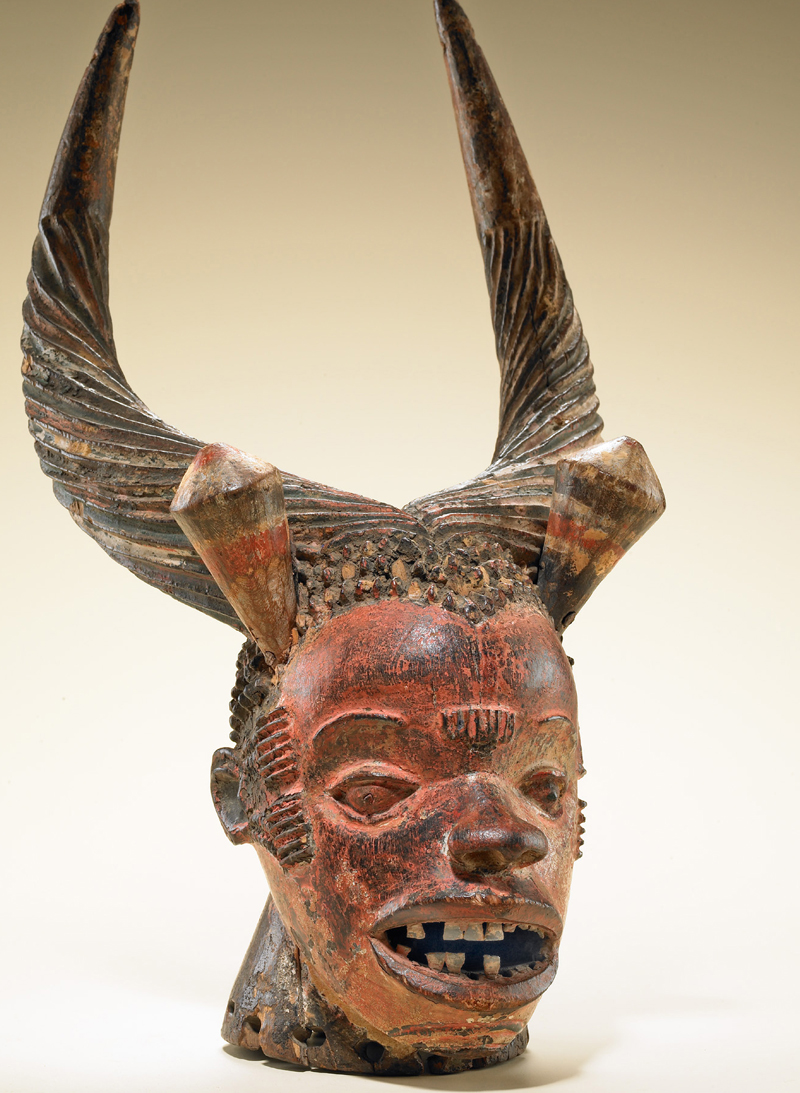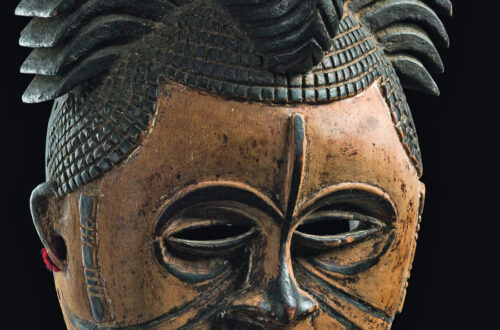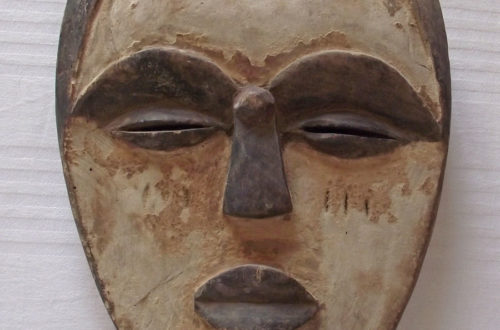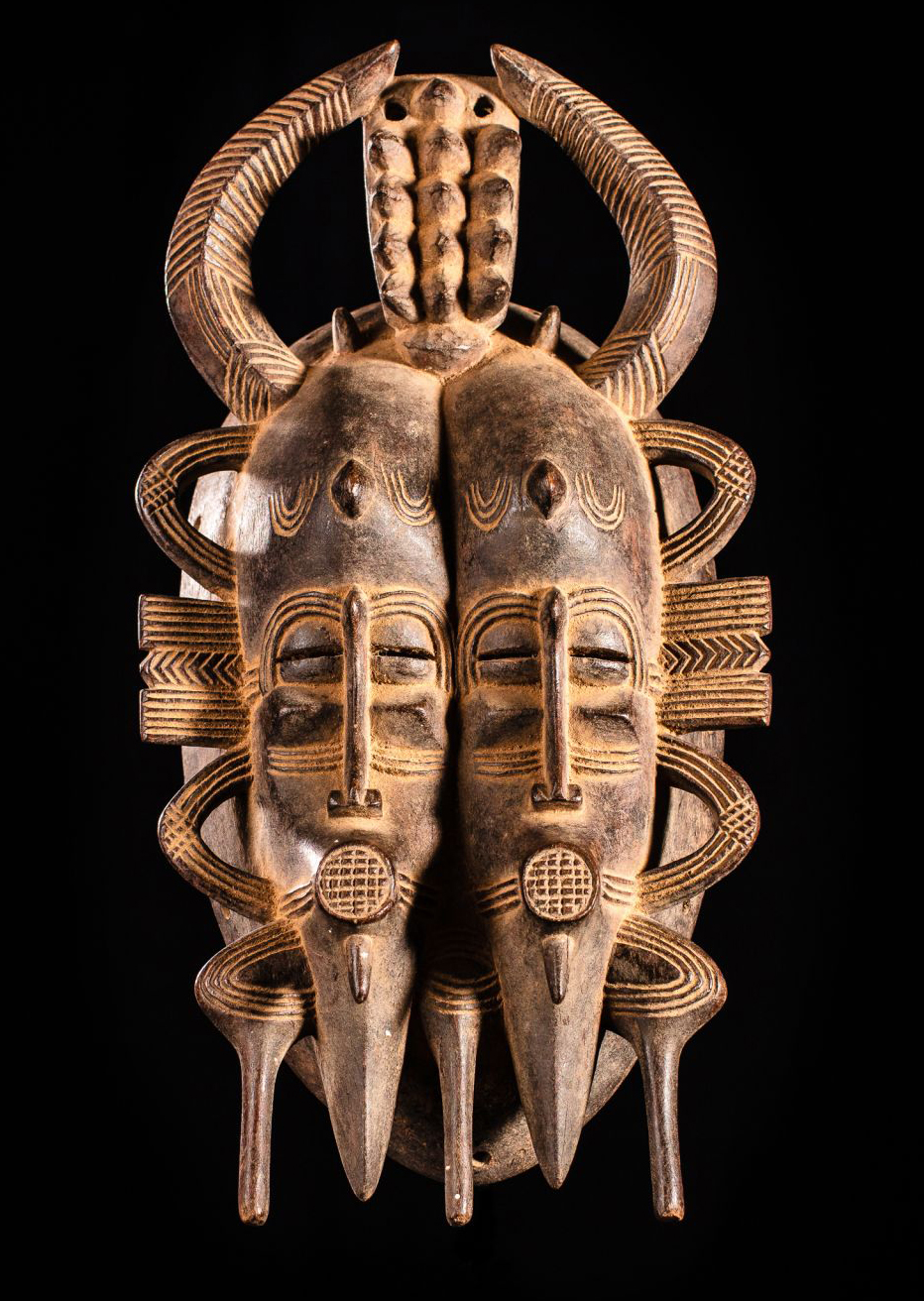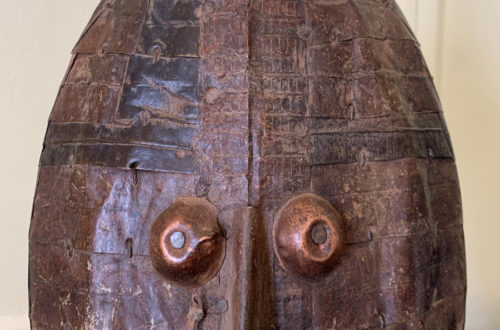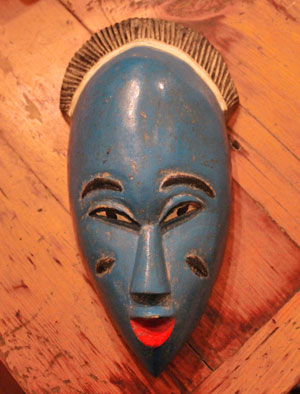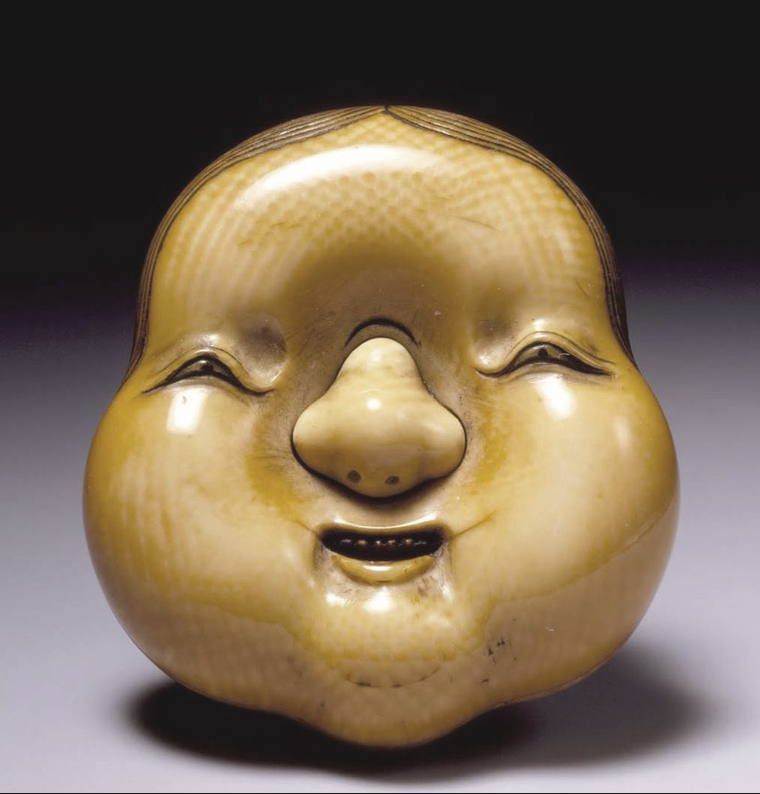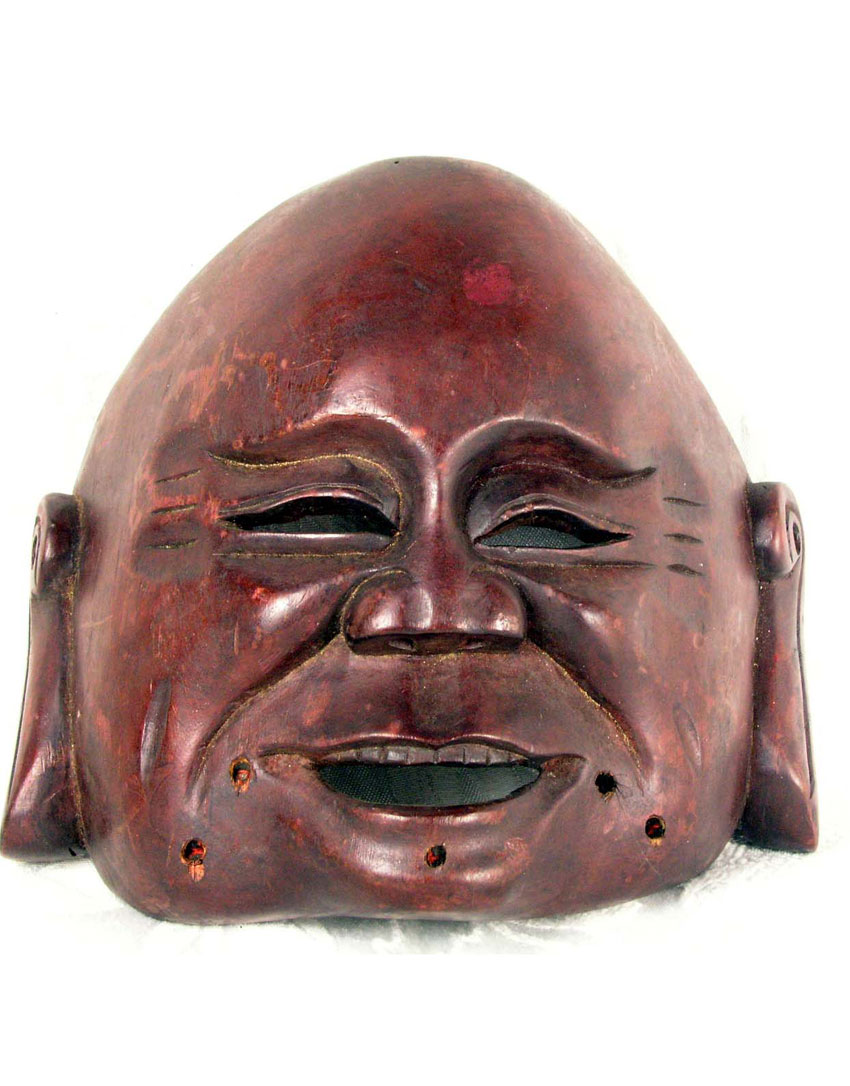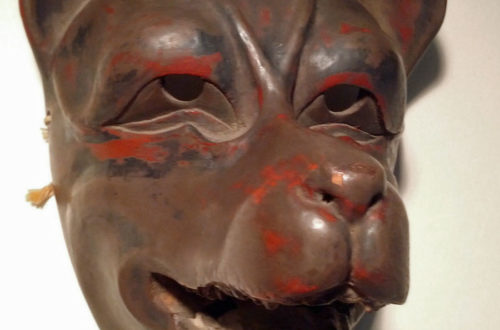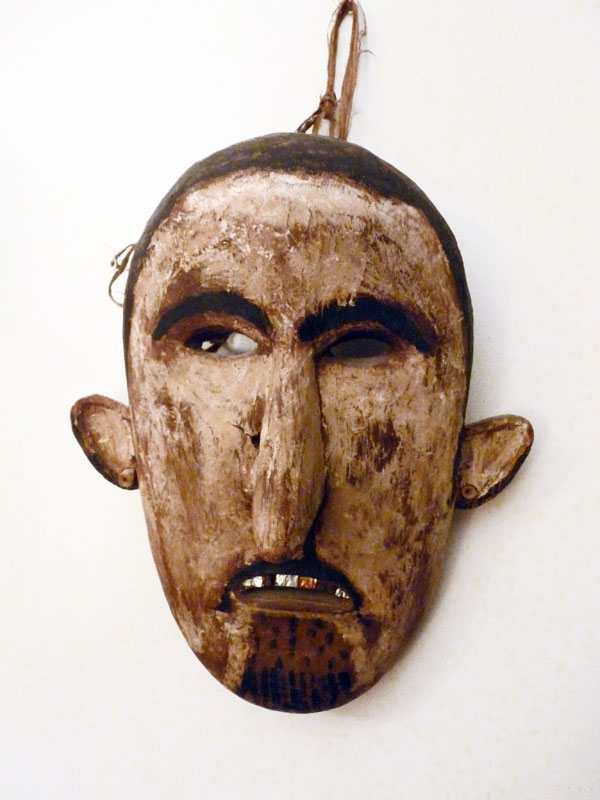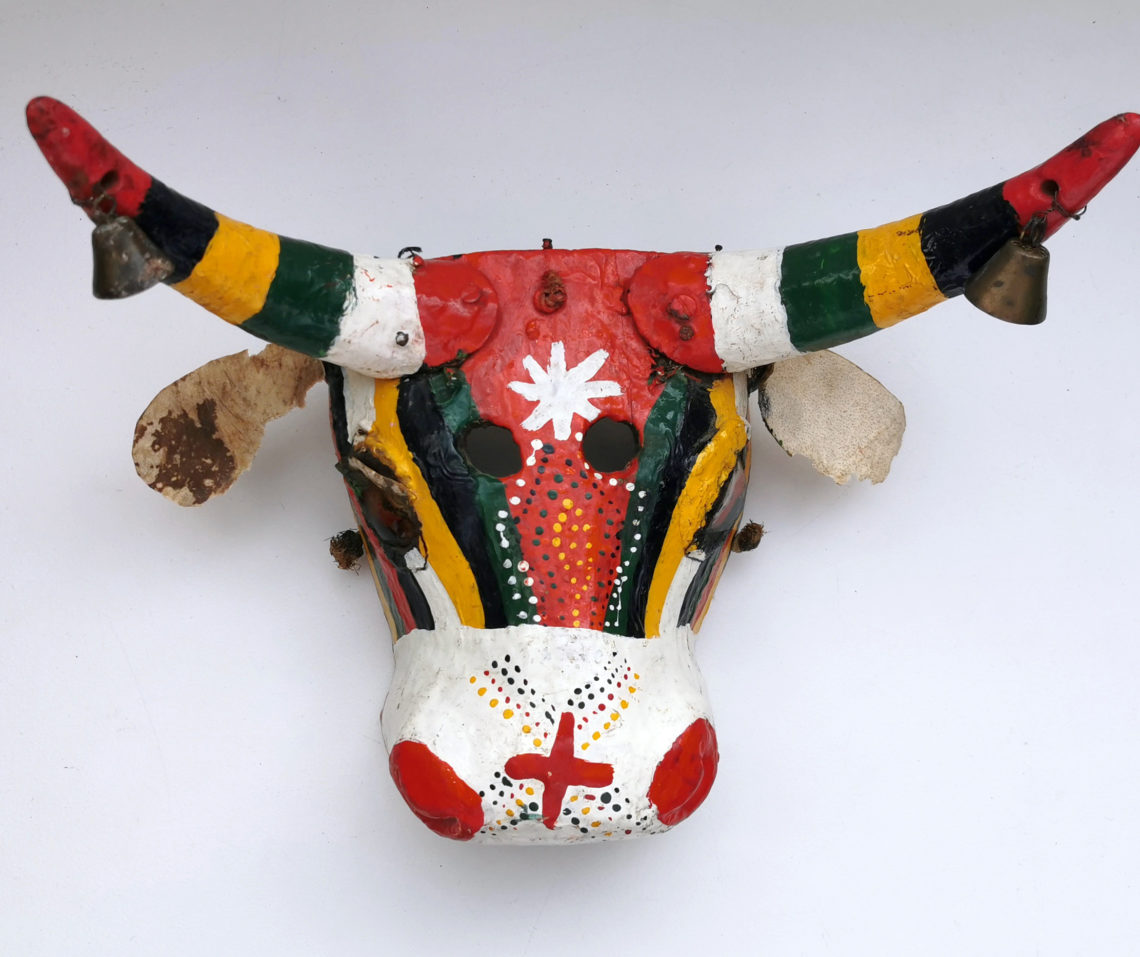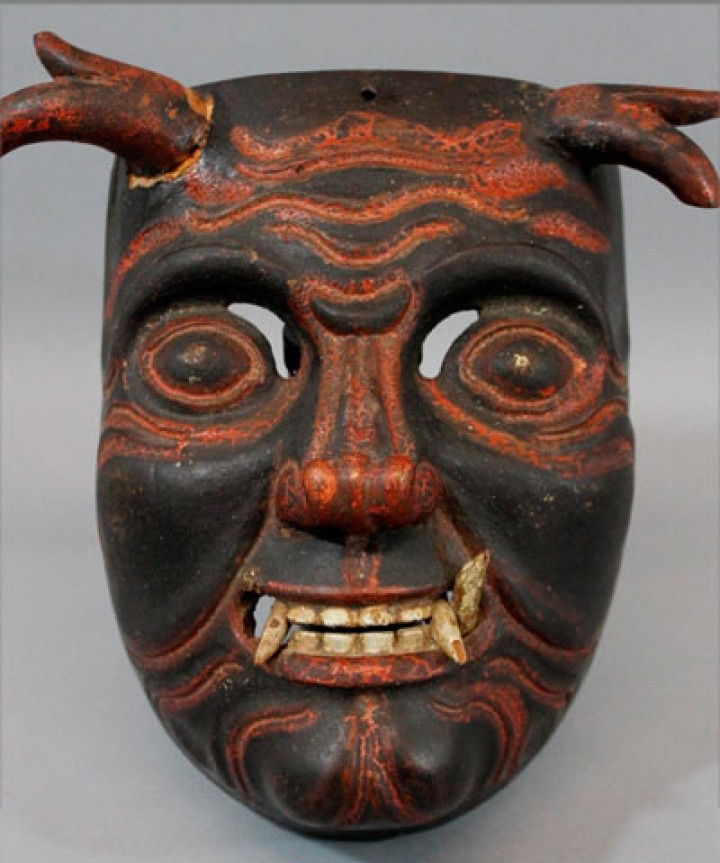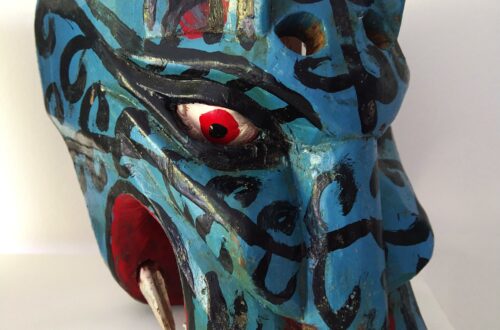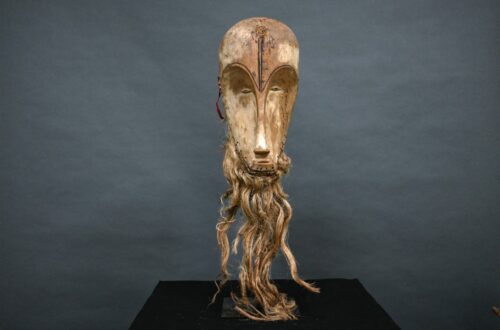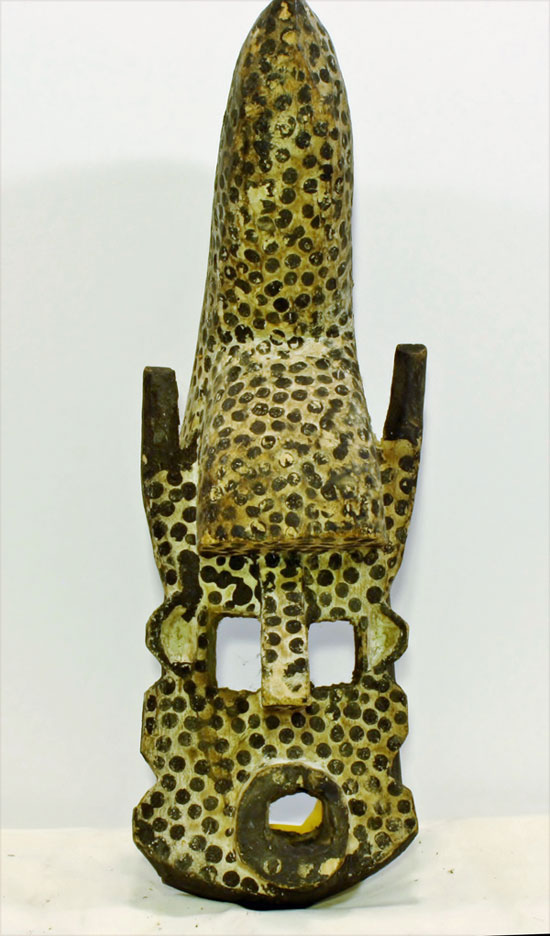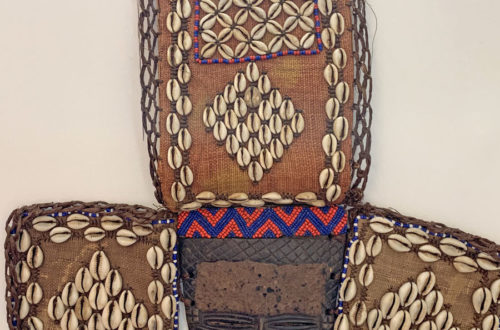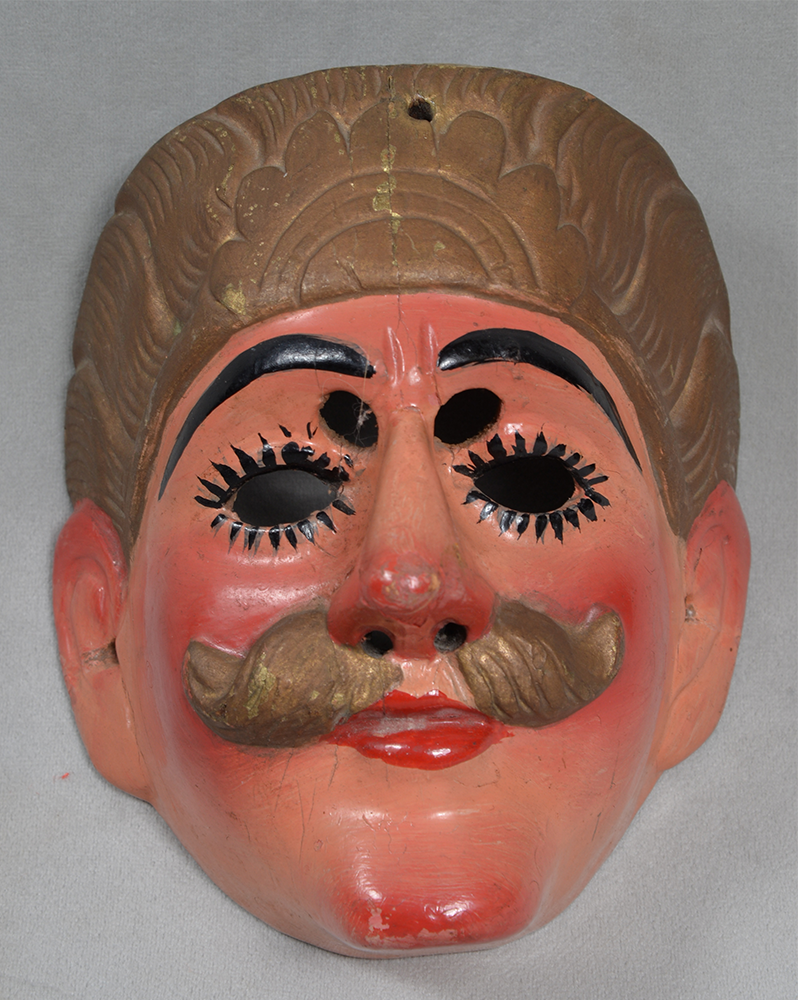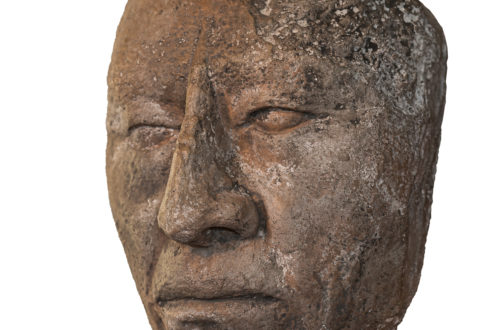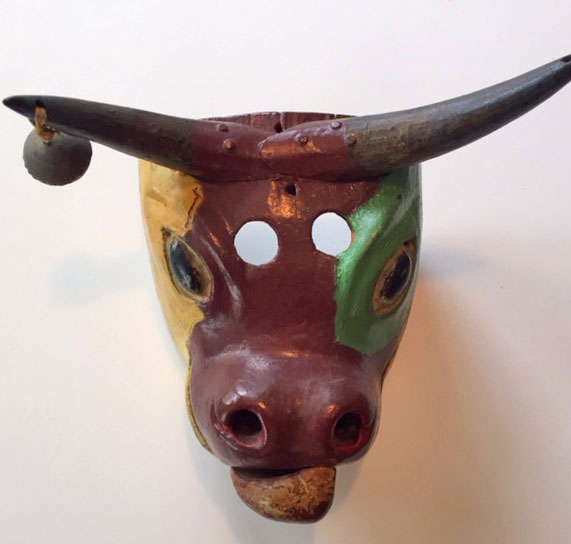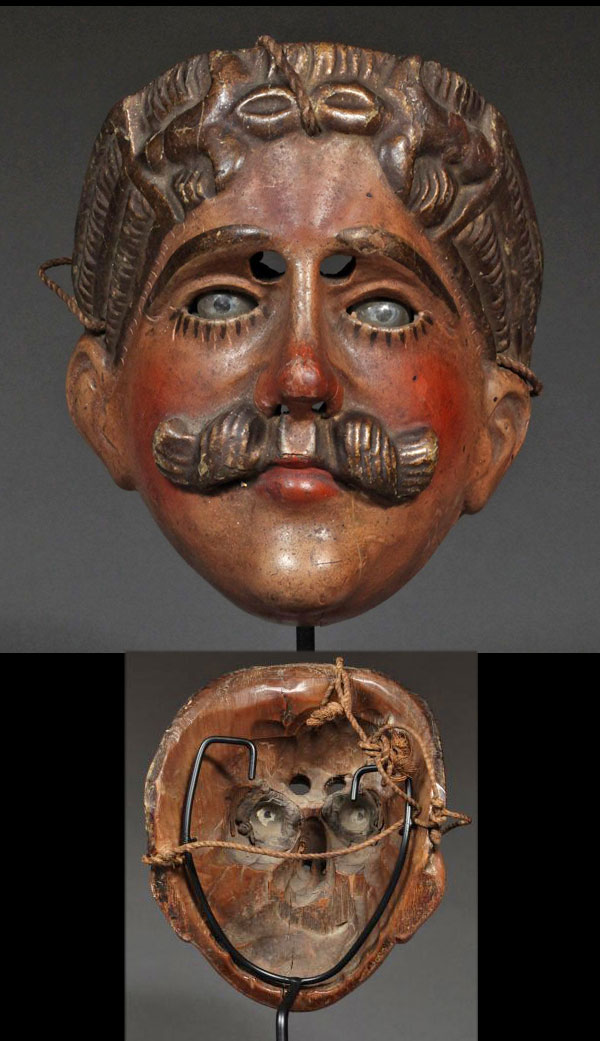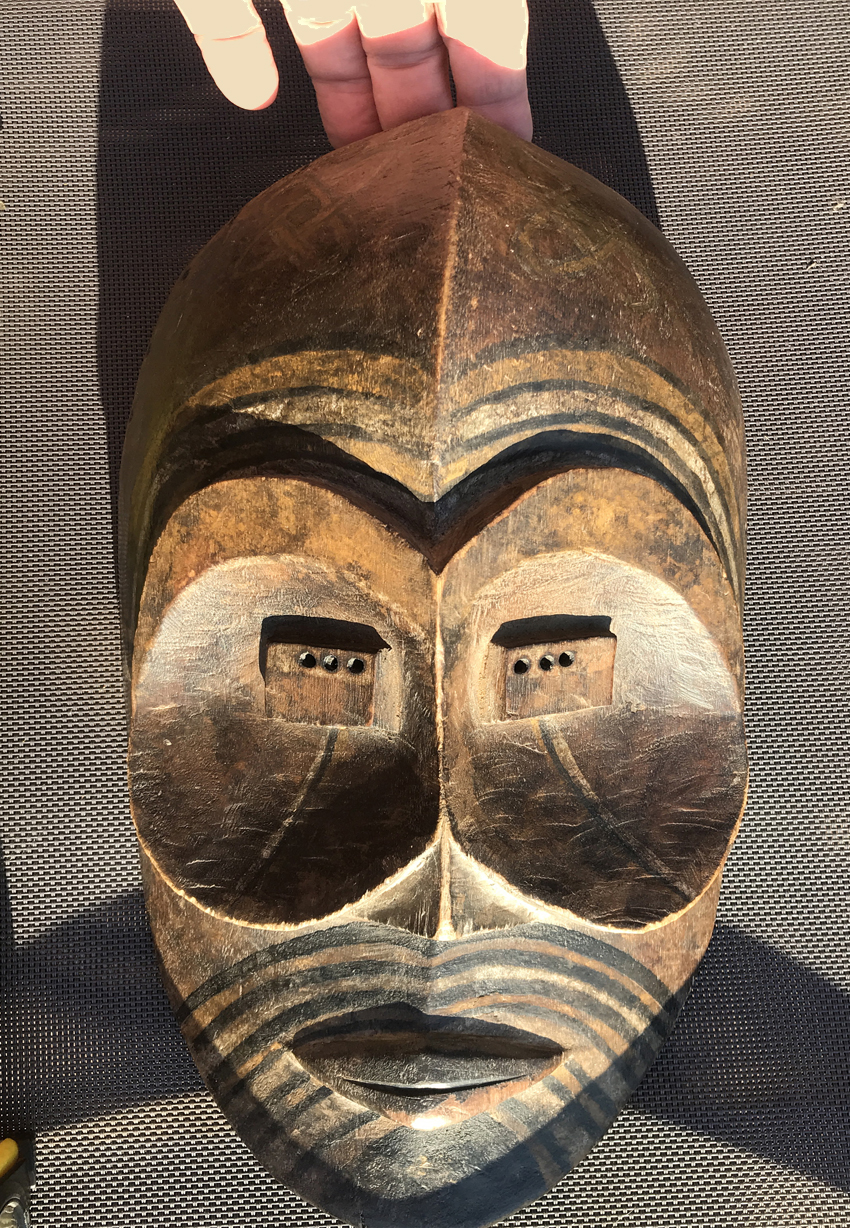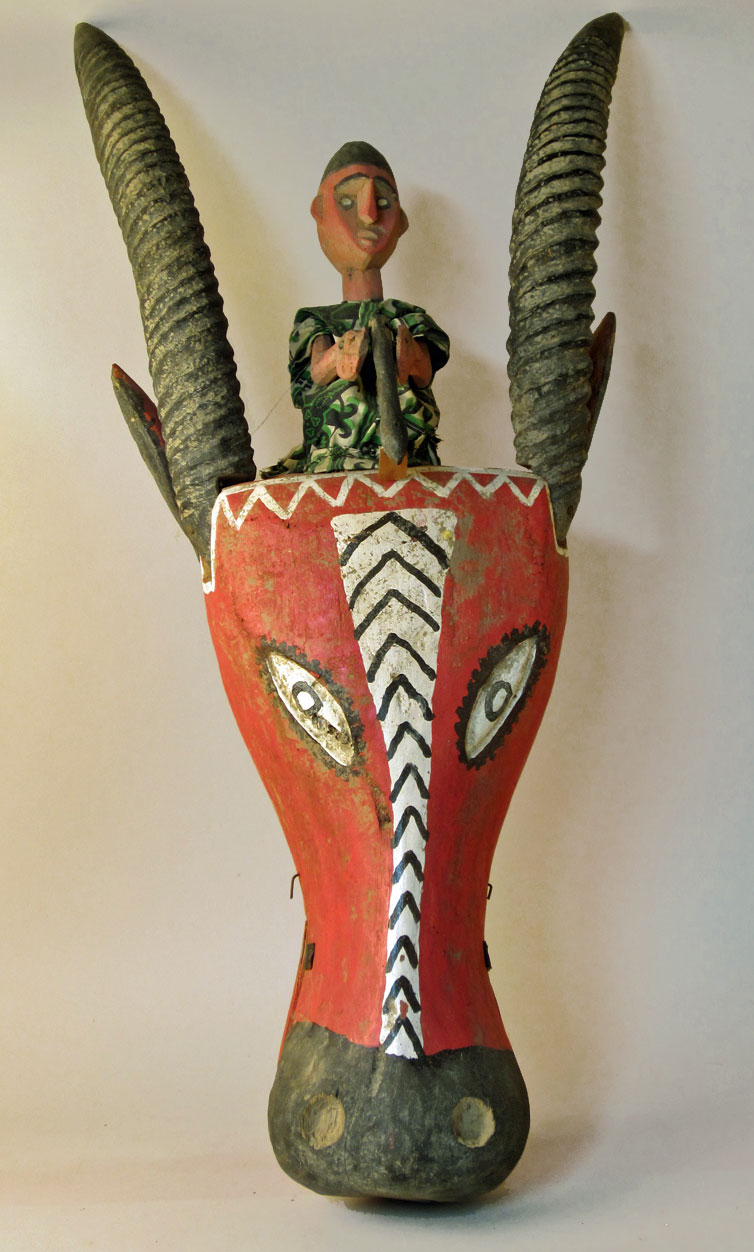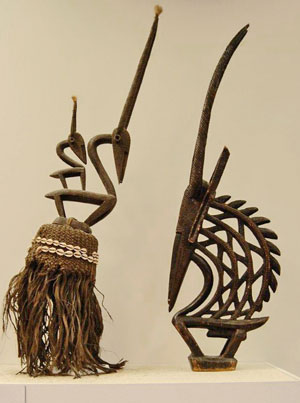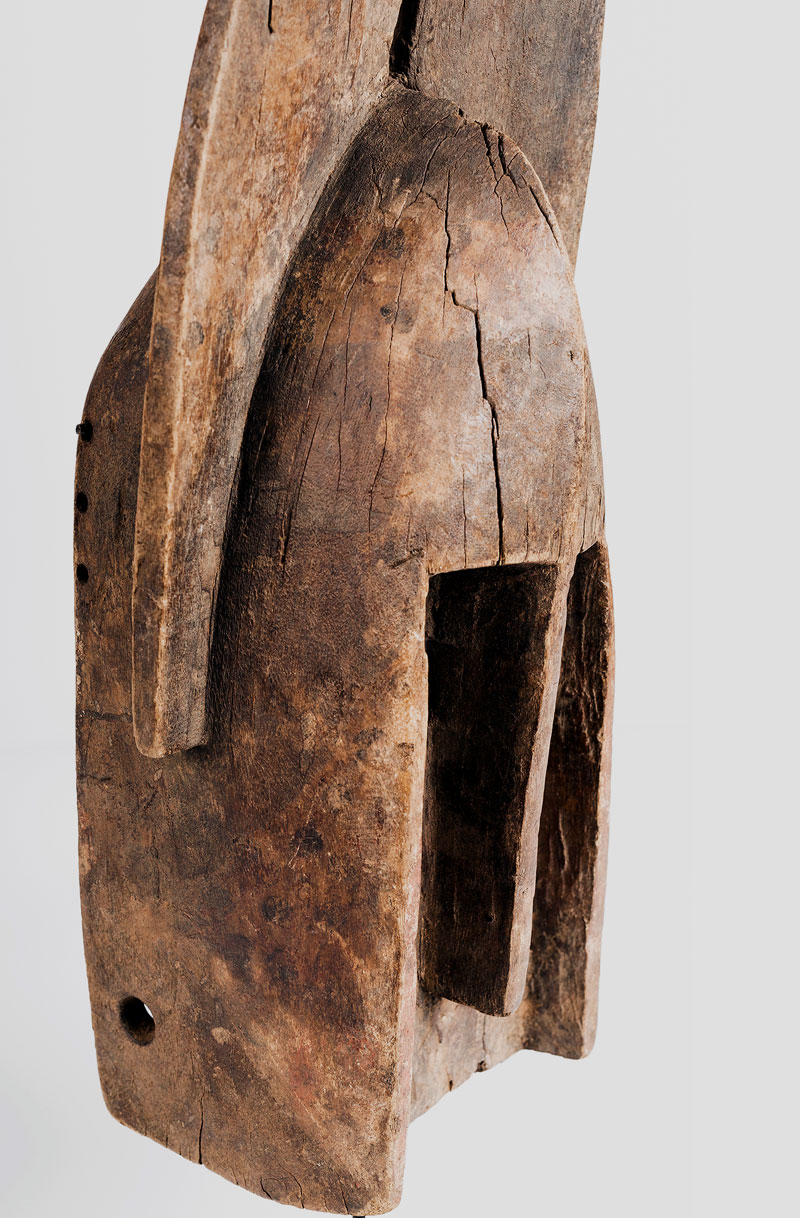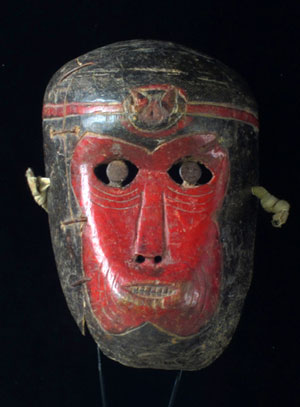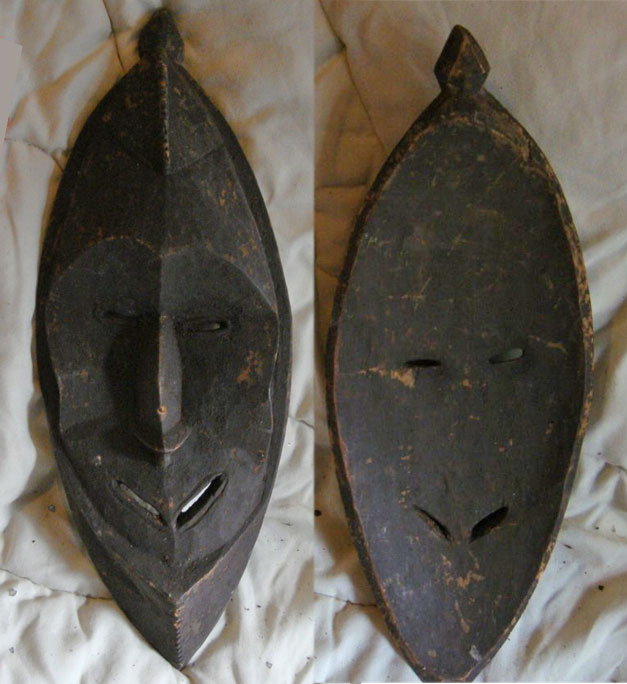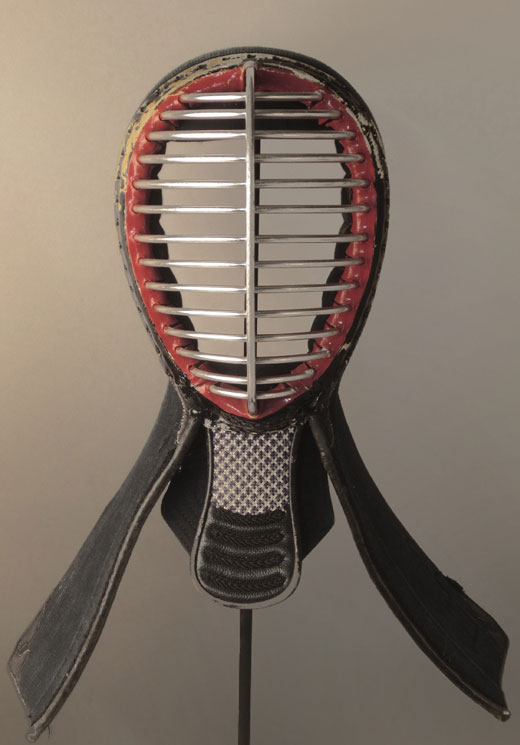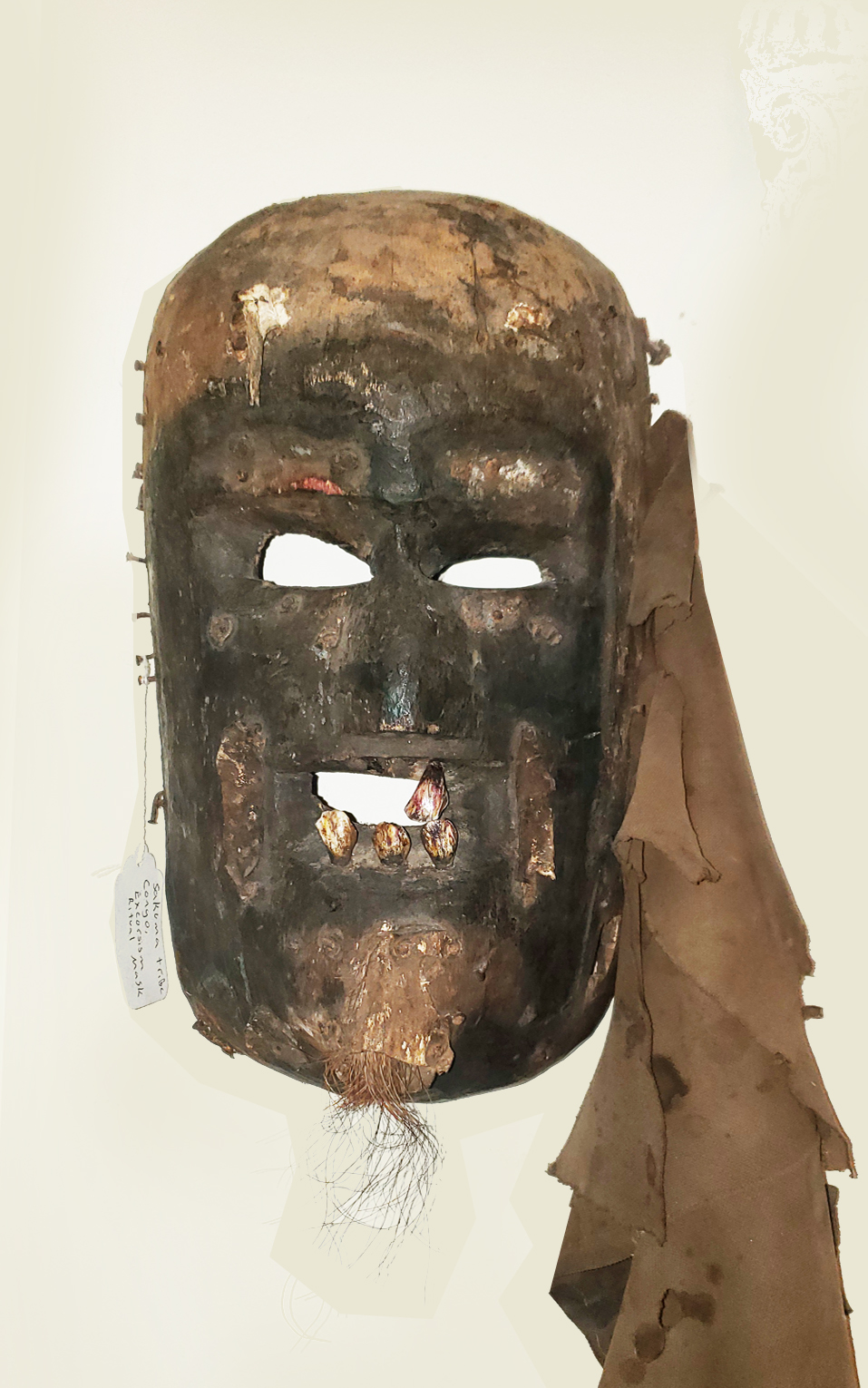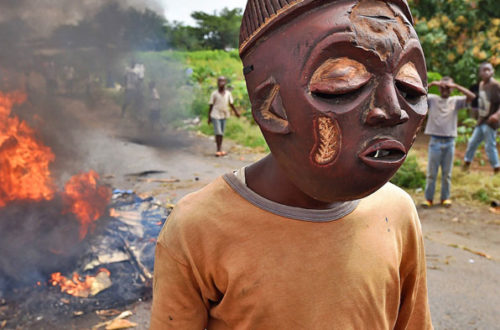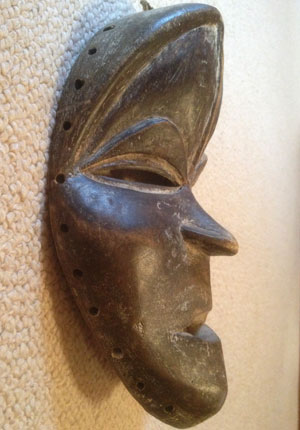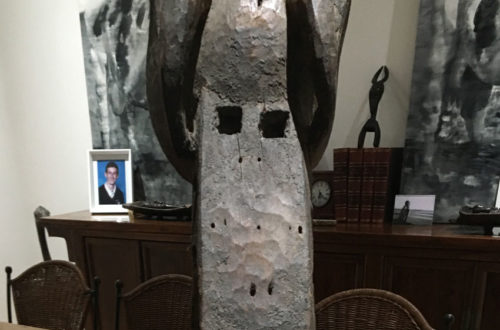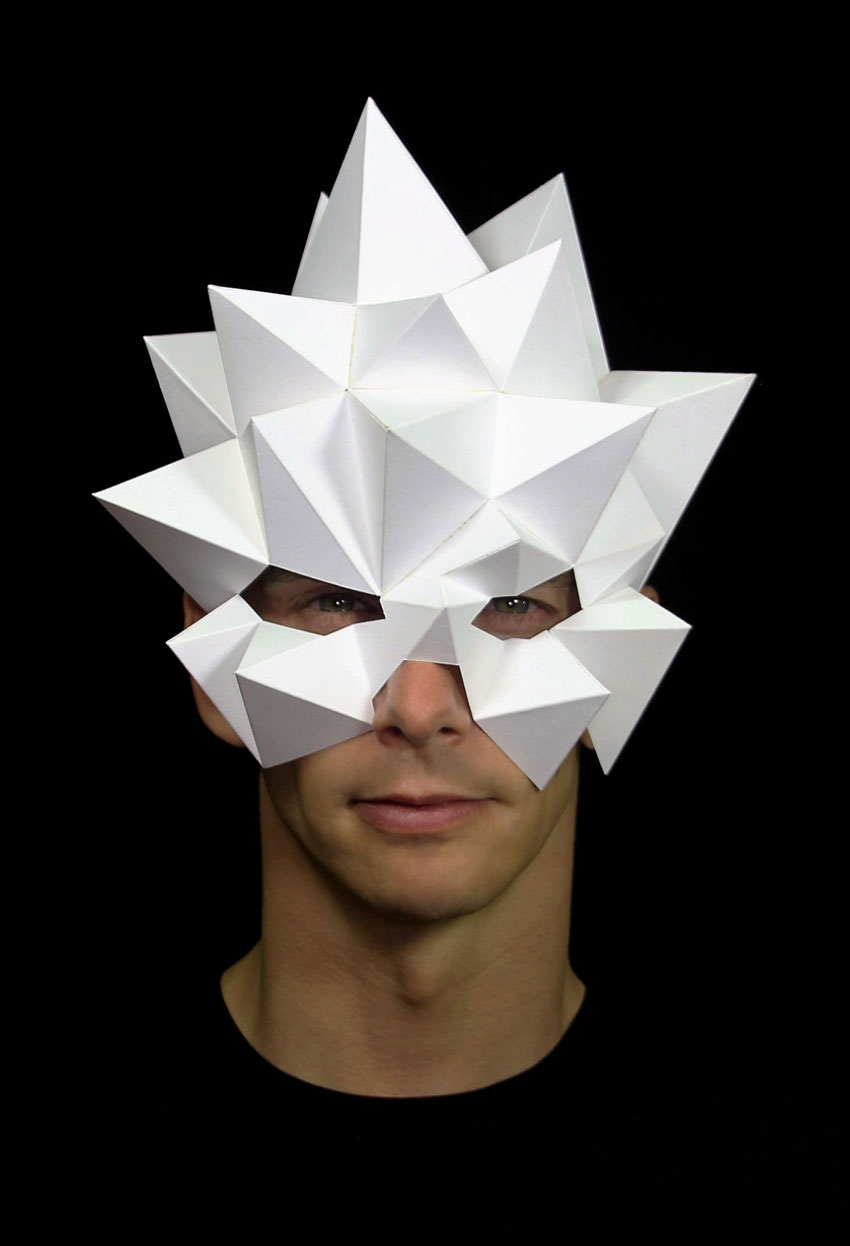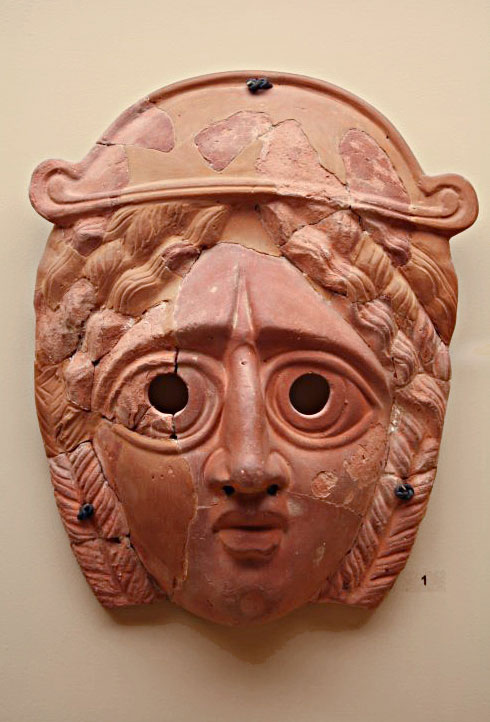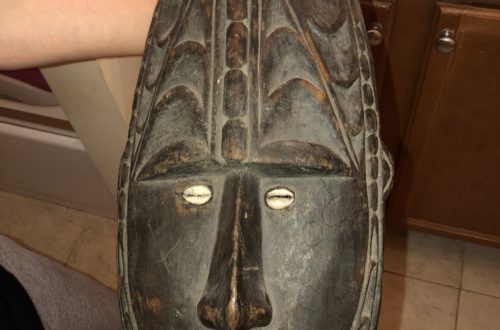Crest masks sit over the top of the head. Visualize a helmet mask that is way too small. They can be found with the costumes of several tribes in a number of different regions. Two live in southeastern Nigeria and western Cameroon and produce a distinctive types of crests or helmet masks carved from wood and oftencovered with animal skin, possibly from an antelope. With or without the leather, these two masks get a lot of attention. Both portray the human head with a high degree of naturalism. They have expressive facial features, intricate linear tattoo patterns, complex spiral horn coiffures, and feather and fiber ornaments. They would have been…
-
-
3 African multiple-faced masks
The many tribes living on the continent of Africa use an amazing number of different masks. MasksoftheWorld.com and our book both have way more African masks than any other kind. However there is one subcategory that doesn’t show up in catalogs and collections very often. That would be the ones that have two, three or four faces on the same mask. Obviously they are harder and more costly to make, and can be difficult to display. Using Google you can find them easily. Collectors should try to own at least one each that are well made and affordable (reproductions). The first shown on this blog is a reproduction of a…
-
3 Japanese masks new to me
A friend sent me an article titled “10 Things You Might Not Know About Traditional Japanese Masks” by Lucy Dayman. She is an Australian-born, Japan-based journalist, copywriter and editor. It is an excellent article, but I new only seven of the masks. So here are the remaining three. I hope you enjoy them as much as I did. The cherub-faced Okame is the wife of Hyottoko, a cheerful lady who’s a symbol of good luck. Technically Okame goes under two names; Otafuku and Okame. Otafuku means good fortune while Okame means tortoise a Japanese symbol of a long life, so no matter which name you’re using she’s a positive sign…
-
Perfect photos of Guatemalan mask
Q: The “Torito” is a frequent character in Guatemalan traditional dances. This a colorful example from the Quiché-speaking Highlands. This type of bull mask is used during the “Baile Toritos” in Chichicastenango or in several other villages in Quiché province, or the “Baile Vaqueros” in Totonicapán. It is made in cedar hardwood, and dates probably from the mid-XX century. The carving and style differs significantly from toritos made in other Mayan areas, as toritos with scorpions from Rabinal in the Achi-speaking Verapaces (see post of Sept 24, 2018), or the very typical small-size mask with a big bell and ribbons used in the Patzcar dance in the province of Sololá…
-
Yellow Zaouli mask from Africa
Q: I would be really grateful if you could tell me if any of my masks are worth anything. I am only sending you photos of one mask, but I have about 20. Maybe I can upload them to a website and then send you a link to view them ? Kia, 1744 A: Zaouli is a traditional dance of the Guro people of central Ivory Coast. The Zaouli mask, used in the dance of the same name, was created in the 1950s, reportedly inspired by a girl named Djela Lou Zaouli. However, stories on the origins of the mask are varied, and each mask can have its own symbolic…
-
Authentic Guatemalan mask in excellent condition
Q: Also wanted to show you another Guatemalan mask from the same seller– please let me know your thoughts. Culturally used Vaquero (Cowboy) Mask from Chichicastenango, noted carver Miguel Ignacio Calel– morería initials on the back. 1950s-1960s. Materials: wood; oil-based paint. You can see some splitting and cracks and has been repainted. The Baile del Torito (Dance of the Little Bull) is a dance performed at the Fiesta de Santo Tomás (Festival of St. Thomas), the patron saint of Chichicastenango and recounts a story of conflict between vaqueros (cowboys) and their foremen (capitanos). Andrew, 1743 A: Mask collecting doesn’t get and better than this. Andrew has written exactly what you…
-
A special African mask
Q: I’ve owned this mask for around 20 years and have often wondered about its authenticity and ethnicity. Lega Bwama has been suggested, but I’m not too convinced. I think it may be a mash-up of several styles aimed for the tourist market. Very much obliged if you could give me your opinion on this. The patina is fine and it is quite nicely carved. I am only interested in African masks that are old or tribaly used. Dave, 1743 A: This is a “mash-up” meant for sales to tourists. Of the many African mask collectors throughout the world, most would like to own old, used ones. Unfortunately, almost African…
-
Japan’s magnificent Noh masks
The Kasshiki-otoko noh mask you see here is from the Meiji period, an era of history which extended from 1868 to 1912. It is very carefully carved wood, painted, lacquered and polished several times. This beautiful piece can be found at the Montreal Museum of Fine Arts. The word Noh means talent, skill and craft in art performance. Noh is the oldest theater style played today. Noh is classical Japanese musical drama based on tales from traditional literature performed since the 14th century. In the story, supernatural creature transforms into human shape and tells the story. The actors tell a story through gestures and appearance in masks. They capture the…
-
Typical African mask for sale
Q: I have owned this mask over 25 years. I bought it from a primitive art dealer in New Jersey. I was told it was an exorcism mask from Belgian Congo. Elephant hair on chin, animal teeth, and remnants of leather on the face of the mask have been added. I learned it was most likely from the Kumu tribe. My original thought was that it was Sukuma. My guess on age is right around turn of century if not older. Most people I show it to tell me it is one of the scariest, most disturbing things then have seen first hand. Shaun, 1740 A: Your primitive African mask…
-
Dayak mask from Borneo
This ceremonial mask comes from the Dayak Kenya-Kayan people who live in Borneo, Indonesia. It is carved wood with natural pigment color and is probably from the late 19th century. Previously in a French collection, it has an old tag that reads “Meyer Collection 0084.” How good that provenance is remains to be seen. It is probably of high value. Try to a find Dayak mask that is similar in appearance. If it is a well made reproduction you might be able to get it for an affordable price. There are still opportunities on the internet. A, 1738
